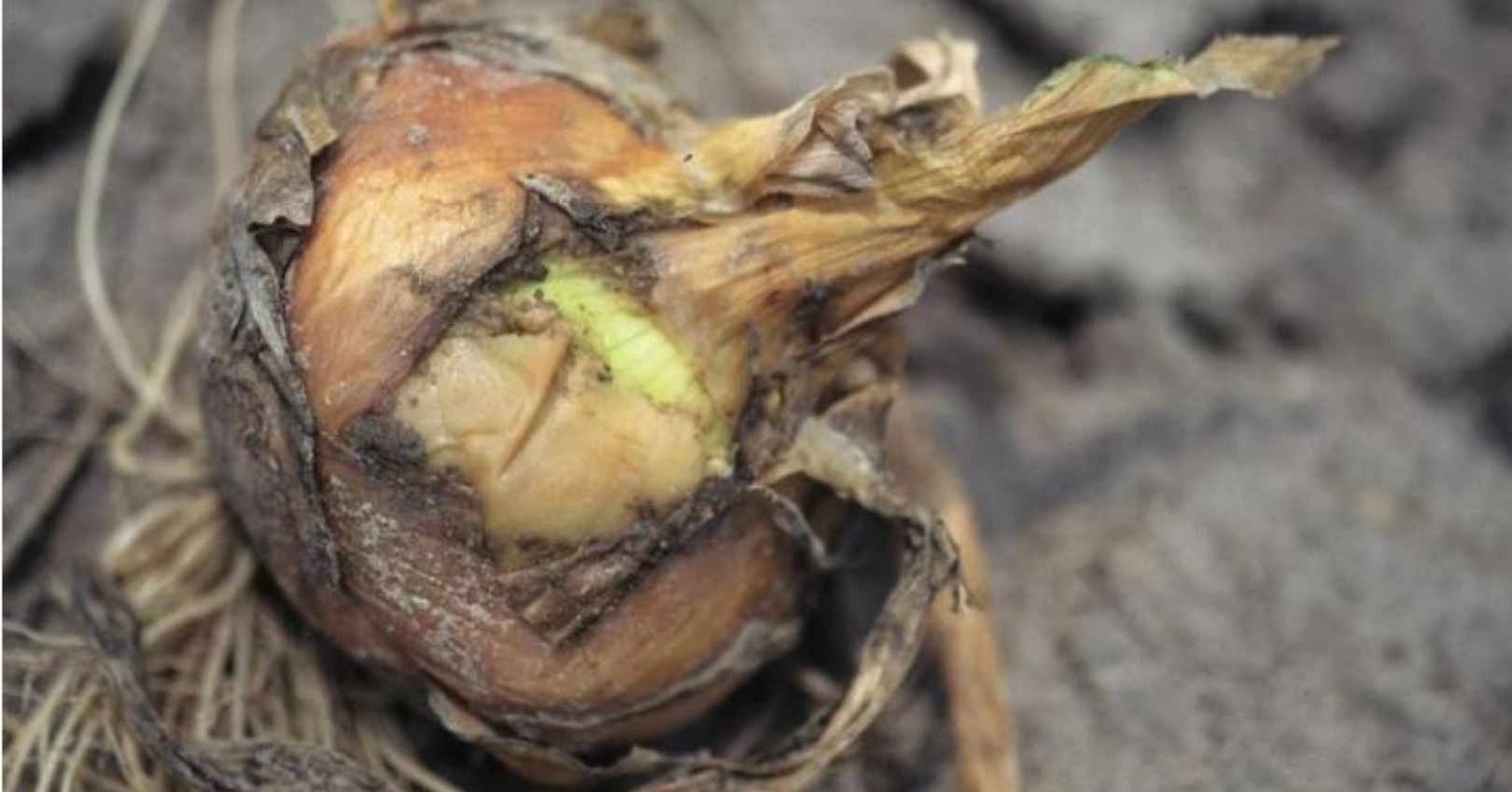
Bacterial Rot
WHAT IT IS AND HOW TO ELIMINATE
Cebolla
Bacterial Rot
Pseudomonas Sp., Pectobacterium Carotovorum, Enterobacter Cloacae
Pathogen:
Bacterium
Type:
Risk to the plant:
INTERMEDIATE
Bacteriosis

WHO CAUSES IT?
Pseudomonas sp., Pectobacterium carotovorum and Enterobacter cloacae are phytopathogenic bacteria that can cause the disease known as bacterial rot in onions. These bacteria can survive in soil and infected plant debris, as well as in contaminated water and growing tools. They can enter the plant through surface wounds, mechanical damage or stomata, and once inside, they multiply rapidly and decompose plant tissues, causing disease.
SYMPTOMS
Bacterial rot in onions produces tissue decomposition, especially in the bulbs. The external caliphs look wrinkled and sunken, the fabrics are softened and a foul odor is perceived. At the beginning of the attack, the bulb appears firm to the touch, appearing to be a healthy bulb; however, when checking and squeezing the neck area, it appears moist and fluid appears. It preferentially manifests itself post-harvest and is the cause of export rejections.
• Soft bulbs with internal decomposition.
• Unpleasant odor due to tissue decomposition.
• Wet lesions at the base of the leaves.
• General weakening of the plant and reduced growth.
• In severe cases, it can cause the death of the plant.


DEVELOPMENT CONDITIONS
Temperature:
20 ºC - 35ºC
Humidity:
80% - 100%
HOW IS IT SPREAD?
Soil, water, infected plant remains, contaminated tools.
HOW TO ELIMINATE IT?
Home treatments
Natural allies
There are no natural allies
Chemical treatments
RECOMMENDED PRODUCTS TO ELIMINATE THE PEST
REPELLENT PLANTS
-
RECOMMENDATIONS
- Avoid wetting the leaves when watering, do it directly to the ground.
- Removes diseased parts and plant remains from the soil.
- Always use clean and disinfected tools.
- Do not handle plants when they are wet.
- Improves ventilation between plants to reduce humidity.
- You can use copper-based treatments as a preventative.
















